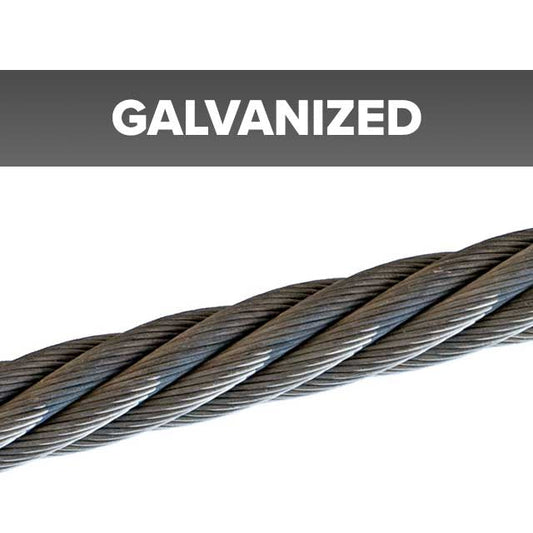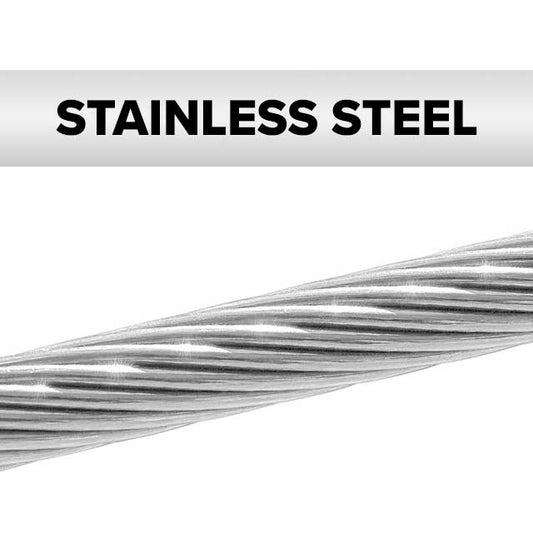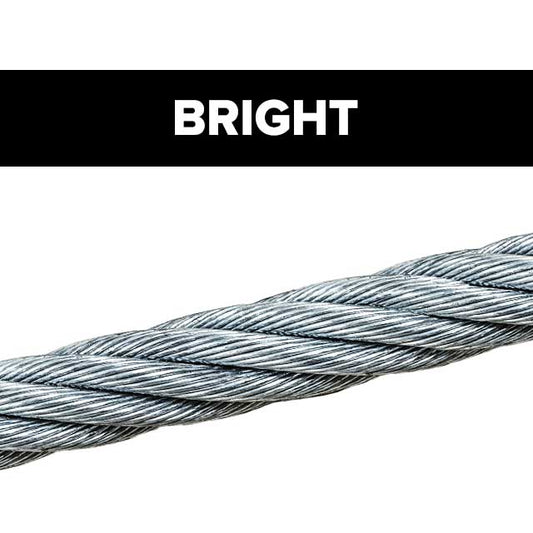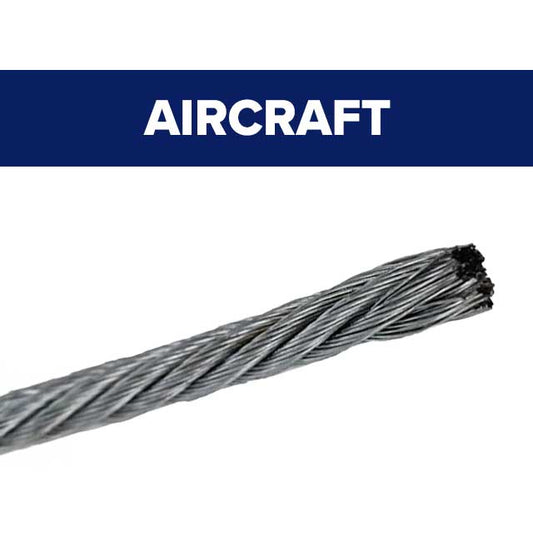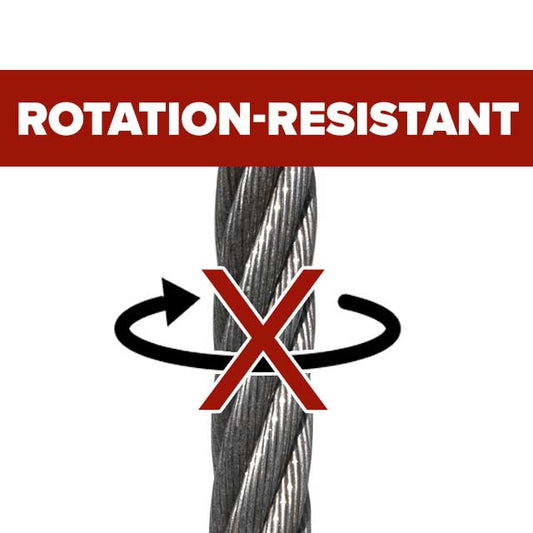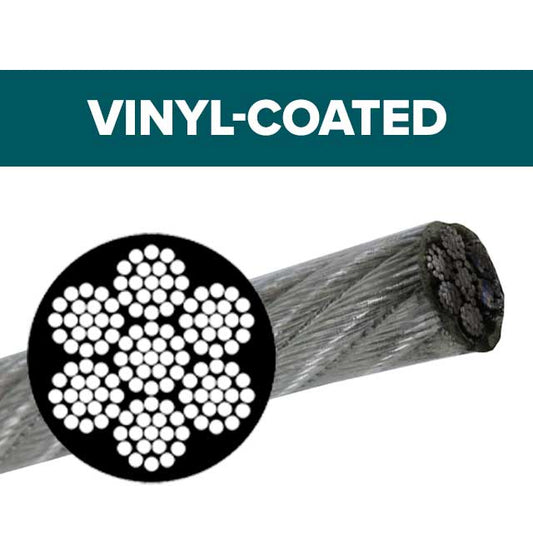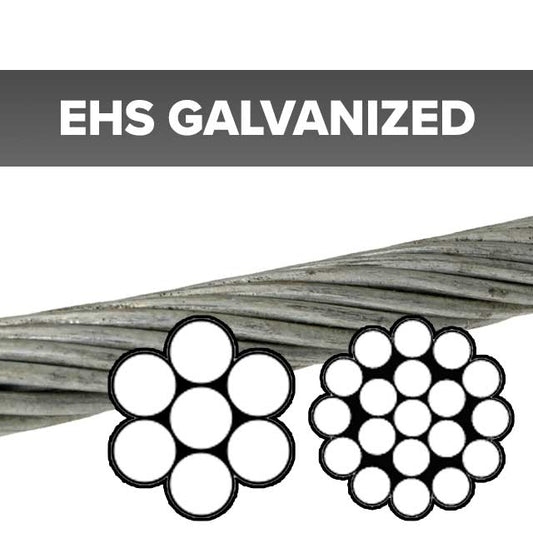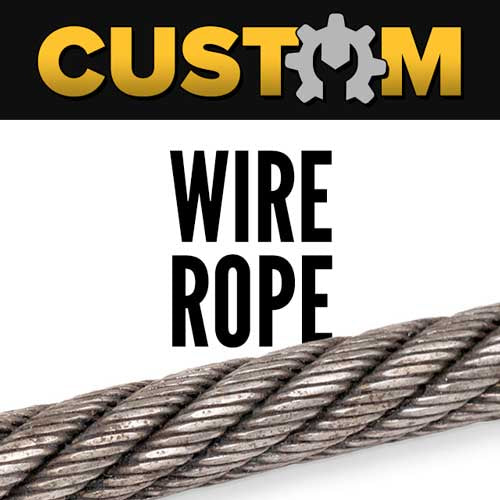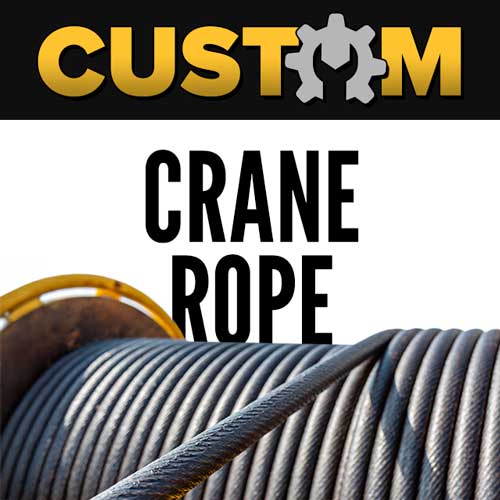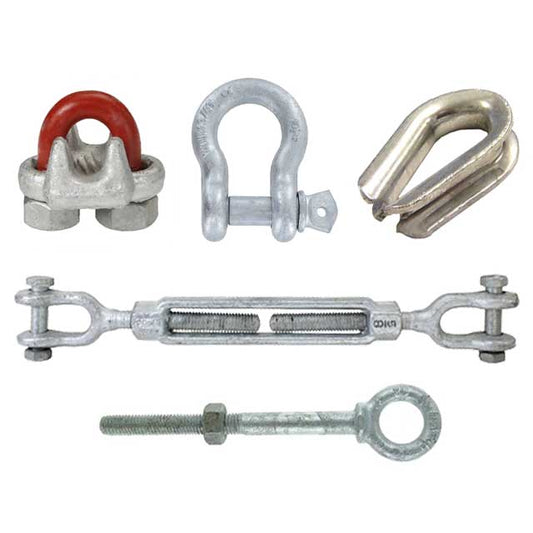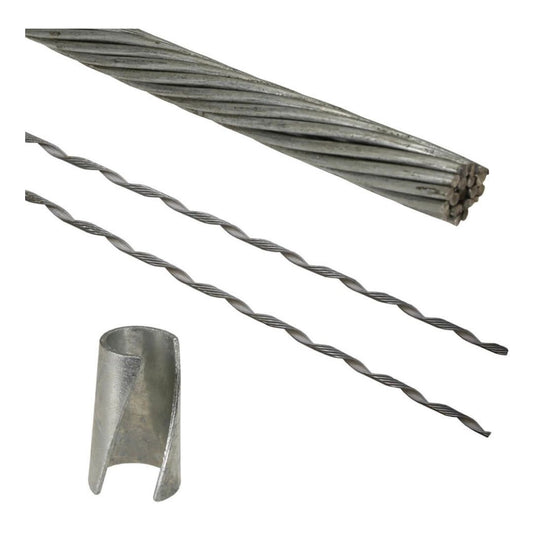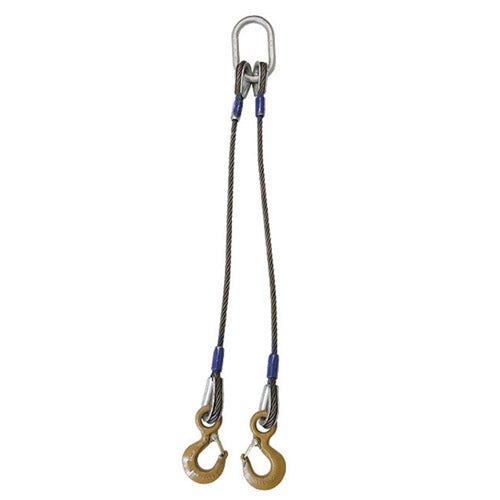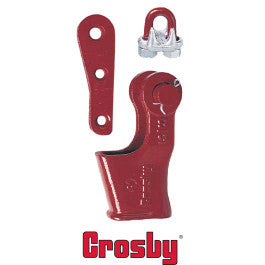Wire Rope
Wire Rope Cable
Choosing the right wire rope is essential for success and worksite safety - and there are a number of factors to consider to ensure you've chosen the best steel cable rope for the job. Our large selection is built to accommodate the needs of a wide variety of industries, from lifting and rigging to towing and construction applications.
To make sure you get what you want when you need it, most of our wire rope is in-stock and ships quickly - whether you're ordering by the linear foot or need an entire whole coil!
All our steel cable meets the stringent dimensional and strength requirements of Federal Specification RR-W-410 (latest revision) and ASTM A1023 standards, ensuring reliable performance and a quality product.
Wire Rope Construction
A wire rope has several main components: a core, outer strands, and wires - together, they represent the wire rope's construction and can affect the overall strength, flexibility, and other key features.

Steel Cable Core Material
The core is the center of the wire rope. The two most common options are fiber cores (FC) and independent wire rope cores (IWRC).
Fiber cores are made of vegetable or synthetic fibers, so they are more flexible than an IRWC. However, they are not recommended for high heat environments and are more susceptible to crushing.
IWRCs are made from steel, offer more support to the outer strands, and have a higher crush-resistance. They are better suited for high temperature applications, with a general range of -40°F / -40°C and 400°F / 204°C.

Wire Rope Class
The outer strands surround the core and are made up of wires - to quickly communicate this information, each wire rope is given a class that nominally represents the number of outer strands and the number of wires making up each strand.
For example, a 6x19 class wire rope will have 6 outer strands, and the number of wires making up each strand will range from 15-26. These numbers offer important information about the rope - a higher number of wires indicates more flexibility and fatigue-resistance, while a lower number of wires indicates better abrasion- and crush-resistance.
Class Breakdown
| Class | Outer Strands | Wires Per Strand |
|---|---|---|
| 6x19 | 6 | 16-26 |
| 6x37 | 6 | 27-49 |
| 6x26 | 6 | 19-36 |
| 19x7 | 19 | 3-14 |
| 19x19 | 19 | 16-26 |
| 8x19 | 8 | 16-26 |
The exception to this is 7x19 aircraft cable - that is made up of 7 identical strands, with one acting as the core. So the number of outer strands would actually be 6, with the number of wires making up each strand ranging from 16-26.
Other Steel Wire Rope & Cable Variations
Along with construction, there are several other wire cable variables to take into account when choosing the right one for your job, including diameter, finish, grade, and lay.
Wire Rope Diameter
Diameter is simple - the greater the diameter, the greater the break strength. A 3/32" type 304 stainless steel cable has a break strength of 920 lbs., while a 3/4" type 304 stainless steel wire rope has a break strength of 49,600 lbs.
To find the diameter, measure at the widest point. This is an industry standard with wire cable manufacturers and steel cable suppliers.

Steel Grade
Next is the grade, which impacts both the strength and the corrosion-resistance of the metal cable.
- IPS is the abbreviation for Improved Plowed Steel - all of our galvanized 7x19 cable is made from this material.
- EIPS is Extra Improved Plowed Steel and has roughly 10% more tensile strength than IPS. Other than the galvanized 7x19 cable, all of our non-stainless steel wire rope is made from EIPS.
- Type 304 Stainless Steel - For the best mixture of strength and corrosion-resistance, type 304 is generally the way to go.
- Type 316 Stainless Steel - Considered marine-grade, type 316 aircraft cable offers the best corrosion-resistance thanks to the addition of molybdenum. However, this cable is slightly weaker than type 304 because there's less carbon in the construction.
Steel Cable Wire Finish
The two most popular finishes are galvanized and bright steel.
Bright steel is the basic option and is uncoated except for lubricant, which reduces friction and protects from corrosion.
Our galvanized wire rope is drawn galvanized (as opposed to electrogalvanized), which means it offers superior corrosion-resistance without compromising the strength of the steel cable - it will have the same break strength as a comparable bright steel wire rope!
A vinyl coating is also available for extra protection.
Lay
All of our wire rope lay is right hand regular lay, with strands wrapped around the core to the right, and the wires making up the strand turned and rotated to the left. This is the standard lay and helps to reduce crushing and kinking.
Custom Steel Wire Ropes
We understand that every application is unique, and our custom options allow you to get the precise specifications you need. Whether you require a specific finish, construction, or core, our team can guide you to the best solution for your project.
Call or fill out our online custom wire rope form to get started.
Wire Rope vs. Steel Cable
While these two terms can be used interchangeably, technically wire rope refers to a diameter greater than 3/8”. Steel cable - also called aircraft cable - applies to all smaller variations.
Consequently, aircraft cable is only used for lighter-duty purposes, such as winch lines, fences, and railings, while wire rope can be using for lifting, hoisting, suspension jobs, etc. Both are ideal for outdoor environments because the strength and length remain constant regardless of whether they are wet or dry.
Questions?
If you're unsure what wire rope or steel cable you need, call to speak to one of our product experts. They can answer any questions you have and even help you place an order!
Complete your setup with other crucial rigging supplies, including turnbuckles, shackles, and eye bolts. And if you are looking for a steel cable wire specifically designed for lifting, check out our wire rope slings.
We also have a wide variety of cable railing and cable railing assemblies. For more information, visit our cable railing page.



